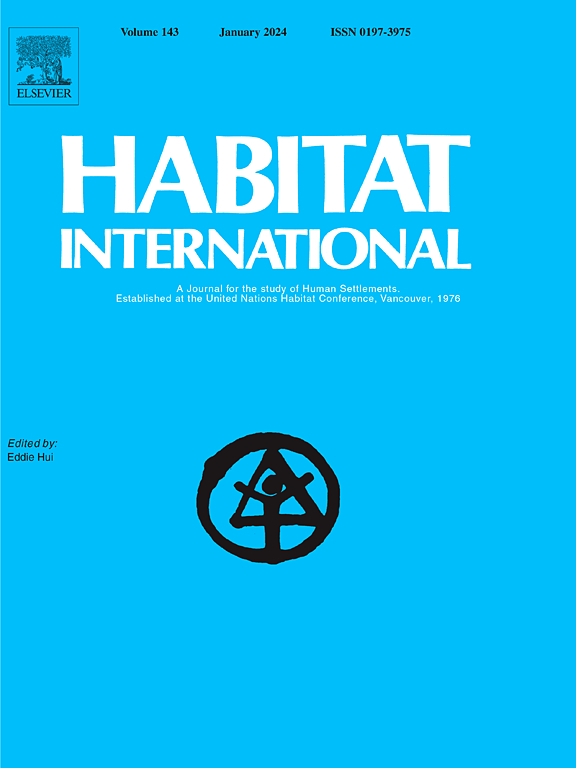乡村公共空间中集体记忆的延续与演变:柴湖镇三个移民村的半结构式访谈和情感地图揭示的问题
IF 6.5
1区 经济学
Q1 DEVELOPMENT STUDIES
引用次数: 0
摘要
大柴湖是中国最大的移民集中安置区,是新中国成立后因丹江口水利枢纽工程建设而产生的早期水库移民。改革开放以来,随着社会的快速发展,"美丽乡村建设 "和 "乡村振兴工程 "的实施,移民区村民的生活质量得到了改善。然而,随之而来的物质空间变化,加上农村人口减少和老龄化问题,使该地区面临着集体记忆衰退和公共空间恶化的双重挑战。本研究从集体记忆入手,通过对钟祥市大柴湖移民安置区三个样本村的田野调查,从精神记忆元素与物质空间场所的互动中绘制情感地图,分析集体记忆与公共空间的发展变迁与代际差异。并从乡村公共空间对村民精神文化和行为活动的支撑,提出了以集体记忆为突破口构建公共空间的策略,为重大社会历史工程影响下的移民安置区建设提出了重构集体记忆、复兴乡村公共空间的目标。本文章由计算机程序翻译,如有差异,请以英文原文为准。
Continuation and evolution of collective memory manifested in rural public space: Revealed by semi-structured interviews and emotional maps in three migrant villages in Chaihu town
Dachaihu is the largest centralized migrant resettlement area in China, resulting from the early reservoir migration that occurred after the founding of New China due to the construction of the Danjiangkou Water Conservancy Project. The quality of life for villagers in migrant areas has improved due to the rapid development of society since the reform and opening up, of the “Beautiful Countryside Construction” and the “Rural Revitalization Project.” However, the subsequent changes in physical space, combined with the issues of rural depopulation and aging, present the area with dual challenges: a decline in collective memory and the deterioration of public space. Starting from collective memory, this study draws an emotional map from the interaction between elements of spiritual memory and material spatial places, analyzes the developmental changes and inter-generational differences between collective memory and public space through field research in three sample villages of the Dachaihu migrant resettlement area in Zhongxiang City. And from the support of rural public space to the spiritual culture and behavioral activities of villagers, it put forward the strategy of building public space with collective memory as a breakthrough, and put forward the goals of reconstructing collective memory and reviving rural public space for the construction of resettlement areas under the influence of major social and historical projects.
求助全文
通过发布文献求助,成功后即可免费获取论文全文。
去求助
来源期刊

Habitat International
Multiple-
CiteScore
10.50
自引率
10.30%
发文量
151
审稿时长
38 days
期刊介绍:
Habitat International is dedicated to the study of urban and rural human settlements: their planning, design, production and management. Its main focus is on urbanisation in its broadest sense in the developing world. However, increasingly the interrelationships and linkages between cities and towns in the developing and developed worlds are becoming apparent and solutions to the problems that result are urgently required. The economic, social, technological and political systems of the world are intertwined and changes in one region almost always affect other regions.
 求助内容:
求助内容: 应助结果提醒方式:
应助结果提醒方式:


